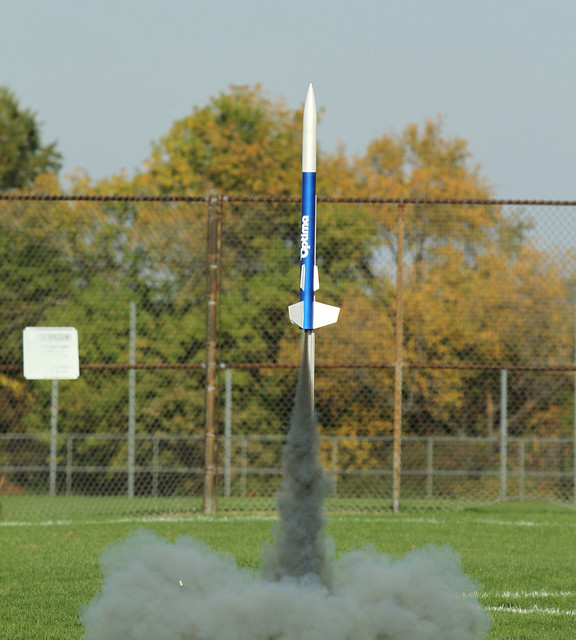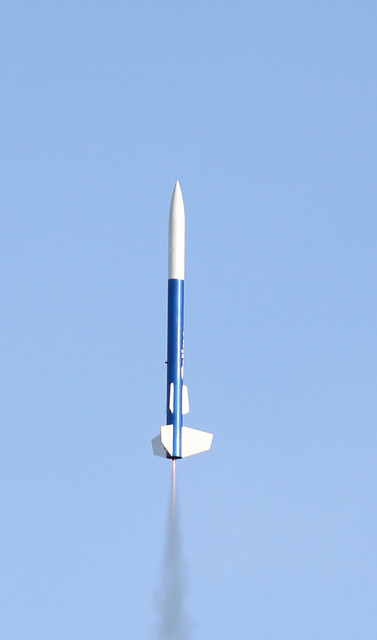Impulse class .. Average thrust .... Delay time . Propellant Type
........ | ............ | ............... | ............ |
........ F ............ 50 ...... - ..... 6 ............ T
Regardless of what Estes says, weigh your built rocket in flight-ready condition with the motor and recovery in it.
ex. "2.5 pounds"
Convert the weight to ounces.
ex. "40 ounces"
Use this formula to see if you get at least a 5:1 thrust:weight ratio --
weight in oz. X 1.40625 Newtons per ounce
ex. "40 X 1.40625 = 56.25 N"
Hmm, maybe not enough thrust for this rocket. In reverse, of course, divide the average thrust by 1.40625 to get the maximum weight that you should try to launch with that motor.
50 N / 1.40625 N/oz = 35.6 oz
If you are using a 50N motor, then you know your final rocket weight needs to be under 35.6 oz.
The above is a broad generalization that does not take in the specific characteristics of individual motors. That is why you need to look at the thrust curve. A motor with 50 N of average thrust may get most of it in the first half-second, which means it will launch the rocket just fine. However, if the thrust peaks later, after it is off the pad, you may be underpowered on the pad.
NAR recommends a minimum 3:1 ratio, but most RSOs I know will only accept a 5:1 minimum ration. But again, it is up to the thrust curve.
As someone recommended, thrustcurve.org will give you the speed off the pad, which is truly the determining factor. It will tell you which motors are safe, and which are unsafe.
There could indeed be a situation where two motors have the same average thrust, but one is safe and one is not.
As wind speed increases, increasing thrust is a MUST! Your requirement for speed off the pad increases to compensate for the wind.
Finally, the total impulse of the motor will help determine its expected altitude. Total impulse is "avg. thrust X burn time." For example, 50 N x 1.4 s = 70 N-s, which puts it in the "F" impulse class.
So, when thinking about altitude, an F50 with a 1.4s burn time will go higher than an F50 with a 1.2s burn time.
Make sense?






